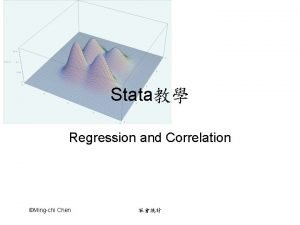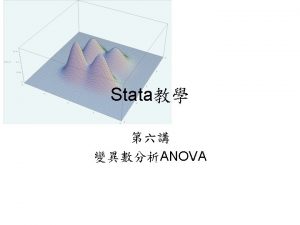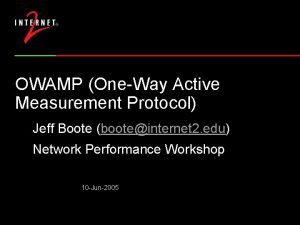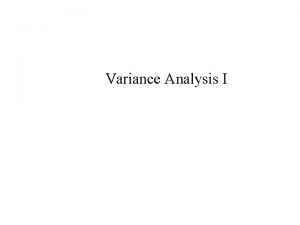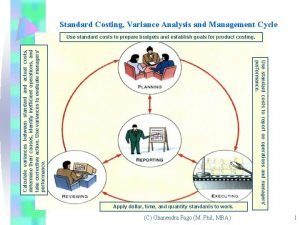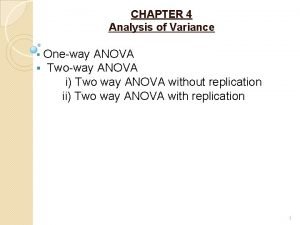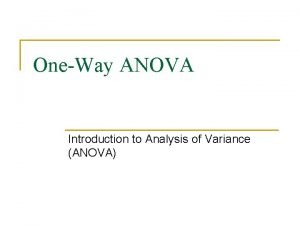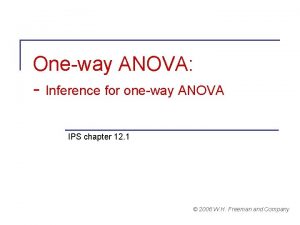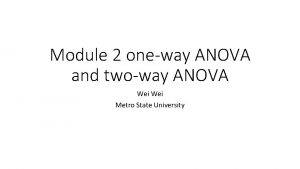Analysis of Variance OneWay ANOVA PostHoc Tests TwoWay












- Slides: 12

Analysis of Variance One-Way ANOVA Post-Hoc Tests Two-Way ANOVA

Objective We wish to test the equality of several means H 1: At least one pair of means is not equal. ANOVA : PLBautista

Notations ANOVA : PLBautista

Why analysis of variance? Explain the variation in the data through two components: Experimental error Error due to treatments Variance: Sum of Squares Identity: SST ANOVA : PLBautista = SSR + SSE

Computational Formulas ANOVA : PLBautista

The ANOVA Table We summarize our computations in the following table: Source of Variation Treatment Error Total Sum of Squares SSR SSE SST Reject Ho if ANOVA : PLBautista Degrees of Freedom k-1 k(n - 1) nk - 1 Mean Square F MSR MSE f = MSR/MSE

Example 1 The following data represent the number of hours of pain relief provided by 5 different brands of headache tablets administered to 25 subjects. The 25 subjects were randomly divided into 5 groups and each group was treated with a different brand. A 5 4 8 6 3 B 9 7 8 6 9 Tablet C 3 5 2 3 7 D 2 3 4 1 4 E 7 6 9 4 7 Perform the analysis of variance, and test the hypothesis at the 0. 05 level of significance that the mean number of hours of relief provided by the tablets is the same for all five brands ANOVA : PLBautista

Example 2 Six different machines are being considered for use in manufacturing rubber seals. The machines are being compared with respect to tensile strength of the product. A random sample of 4 seals from each machine is used to determine whether the mean tensile strength varies from machine to machine. The following are the tensile strength measurements in kilograms per square centimeter. Machine 1 17. 5 16. 9 15. 8 18. 6 2 16. 4 19. 2 17. 7 15. 4 3 20. 3 15. 7 17. 8 18. 9 4 14. 6 16. 7 20. 8 18. 9 5 17. 5 19. 2 16. 5 20. 5 6 18. 3 16. 2 17. 5 20. 1 Perform the analysis of variance at the 0. 05 level of significance and indicate whether or not the mean tensile strengths differ significantly for the 6 machines. ANOVA : PLBautista

Unequal Sample Sizes Degrees of freedom: SST N - 1, SSR k – 1, SSE N-k ANOVA : PLBautista

Example 3 It is suspected that higher priced automobiles are assembled with greater care than lower-priced automobiles. To investigate this, a large luxury model A, a medium size sedan B, and a subcompact hunchback C were compared for defects when they arrived at the dealer’s showroom. All cars were manufactured by the same company. The number of defects for several of the three models were recorded and are shown below: A 4 7 6 6 Model B 5 1 3 5 3 4 C 8 6 8 9 5 Test the hypothesis at the 0. 05 level of significance that the average number of defects is the same for the three models. ANOVA : PLBautista

Post-Hoc Tests ANOVA : PLBautista

Two-Way ANOVA (with Replication) We wish to test the following hypotheses: Ho: The column means are all equal H 1: The column means are significantly different Ho: The row means are all equal H 1: The row means are significantly different Ho: There is no significant interaction effect. H 1: There is a significant interaction effect. ANOVA : PLBautista
